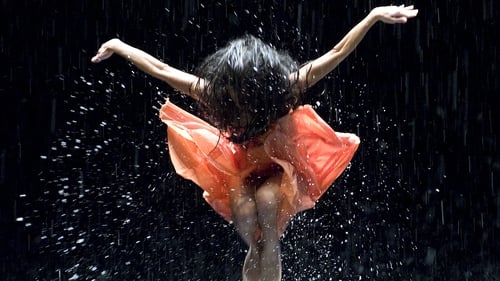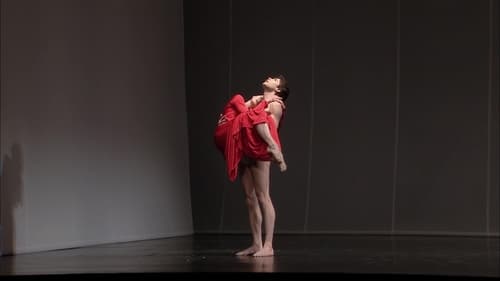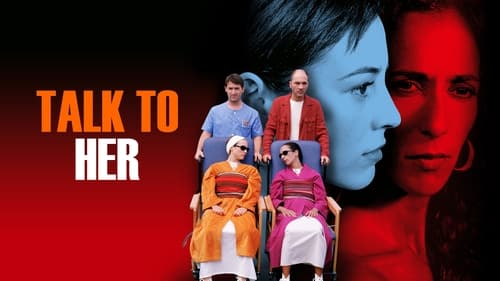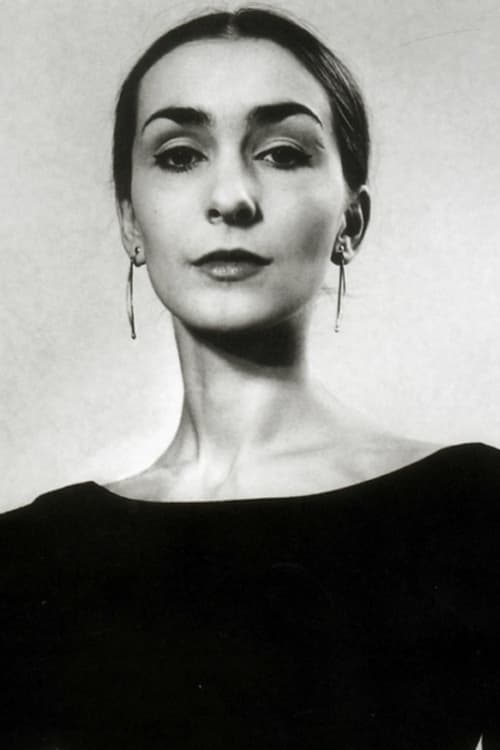Pina Bausch
Birth : 1940-07-27, Solingen, Germany
Death : 2009-06-30
History
Philippine "Pina" Bausch (27 July 1940 – 30 June 2009) was a German dancer and choreographer who was a significant contributor to a neo-expressionist dance tradition now known as Tanztheater. Bausch's approach was noted for a stylized blend of dance movement, prominent sound design, and involved stage sets, as well as for engaging the dancers under her to help in the development of a piece, and her work had an influence on modern dance from the 1970s forward. Her work, regarded as a continuation of the European and American expressionist movements, incorporated many expressly dramatic elements and often explored themes connected to trauma, particularly trauma arising out of relationships. She created the company Tanztheater Wuppertal Pina Bausch, which performs internationally.
Description above from the Wikipedia article Pina Bausch, licensed under CC-BY-SA, full list of contributors on Wikipedia.

Choreographer
Two of Pina Bausch’s most famous works are rehearsed in Germany and Senegal, championing the choreographer’s legacy through a younger generation of dancers.

Choreographer
Pina Bausch’s iconic choreography to The Rite of Spring danced on the beach in Toubab Dialaw, Senegal. Filmed as the world descended into lockdown, this recording captures the last rehearsal of a specially assembled company of 38 dancers from 14 African countries, and documents a unique moment in their preparations for an international tour that would go on to be cancelled by COVID-19.

Self (archive footage)

Stage Director
Complete recording of Pina Bausch's piece Vollmond (Full Moon) by Wim Wenders.

Choreographer
Complete recording of Pina Bausch's piece Vollmond (Full Moon) by Wim Wenders.

Stage Director
In many ways, "Kontakthof" could be seen as the sum of Pina Bausch's choreographies: the performance takes place at a single location. The high room is completely empty and open to the public - like a showcase. The other three sides are furnished with long rows of chairs, like in a dance school. Men and women sit next to each other. Little by little they rise and all sorts of encounters ensue, some cautious and tentative, others wild and impetuous. Sometimes there is a single couple on the dance floor, sometimes the full cast of 30 dancers. Bausch created this piece with her ensemble in 1978. "Kontakthof" is one of four choreographies by Pina Bausch that the director Wim Wenders recorded in full for his film "Pina - Tanzt, tanzt, oder wir los sind" ("Pina - Dance, Dance, Otherwise We Are Lost").

Choreographer
In many ways, "Kontakthof" could be seen as the sum of Pina Bausch's choreographies: the performance takes place at a single location. The high room is completely empty and open to the public - like a showcase. The other three sides are furnished with long rows of chairs, like in a dance school. Men and women sit next to each other. Little by little they rise and all sorts of encounters ensue, some cautious and tentative, others wild and impetuous. Sometimes there is a single couple on the dance floor, sometimes the full cast of 30 dancers. Bausch created this piece with her ensemble in 1978. "Kontakthof" is one of four choreographies by Pina Bausch that the director Wim Wenders recorded in full for his film "Pina - Tanzt, tanzt, oder wir los sind" ("Pina - Dance, Dance, Otherwise We Are Lost").

Herself (archive footage)
Pina is a feature-length dance film in 3D with the ensemble of the Tanztheater Wuppertal Pina Bausch, featuring the unique and inspiring art of the great German choreographer, who died in the summer of 2009.

The dance performance “Kontakthof” bears the unmistakable signature of Pina Bausch: it deals with forms of human contact, encounters between the sexes, and the search for love and tenderness, with all its attendant anxieties, yearnings and doubts. It is a dance about feelings, which always pose a big challenge – particularly for young people. Teenagers from more than eleven schools in Wuppertal went on an emotional journey that lasted almost a year. Every Saturday, forty students aged between fourteen and eighteen years of age took part in rehearsals that were led by Bausch-dancers Jo-Ann Endicott and Bénédicte Billiet and intensely supervised by Pina Bausch herself.

Choreographer
The Ballet de l'Opera National de Paris mounted this production of the late Pina Bausch's dance-opera Orpheus und Eurydike, which Bausch had adapted from composer Christoph Willibald-Gluck and Ranieri de' Calzabigi's 1762 opera Orfeo ed Euridice. As the title suggests, it takes its basic narrative from the myth of Orpheus, and his courageous but ill-fated attempt to rescue his lover Eurydice (also known as Eurydike) from the jaws of the underworld. This particular production finds Yann Bridard dancing as Orpheus and Marie-Agnès Gillot dancing as Eurydike , with mezzo-soprano Maria-Riccarda Wesseling accompanying Bridard and soprano Julia Kleiter accompanying Wesseling. Pina Bausch did the choreography and stage direction, while Rolf Borzik designed the sets, costumes and lighting. The Balthasar-Neumann Ensemble & Choir, under the direction of Thomas Hengelbrock, lend musical accompaniment.

Documentary about German choreographer Pina Bausch.

Bailarine
Two men share an odd friendship while they care for two women who are both in deep comas.

Choreographer
This first film by choreographer Pina Bausch reflects her method of working as developed with the Wuppertal Theatre of Dance during the 1973/74 season. The film does not tell a story, but is made up of various scenes put together as a collage with scenes set in different locations. The futility of human activity and the search for love make up the film's central theme set against the strains of a Silician funeral march. Filmed on location in Wuppertal, Germany, between October 1987 and April 1989.

Writer
This first film by choreographer Pina Bausch reflects her method of working as developed with the Wuppertal Theatre of Dance during the 1973/74 season. The film does not tell a story, but is made up of various scenes put together as a collage with scenes set in different locations. The futility of human activity and the search for love make up the film's central theme set against the strains of a Silician funeral march. Filmed on location in Wuppertal, Germany, between October 1987 and April 1989.

Director
This first film by choreographer Pina Bausch reflects her method of working as developed with the Wuppertal Theatre of Dance during the 1973/74 season. The film does not tell a story, but is made up of various scenes put together as a collage with scenes set in different locations. The futility of human activity and the search for love make up the film's central theme set against the strains of a Silician funeral march. Filmed on location in Wuppertal, Germany, between October 1987 and April 1989.

Director
As debut of the film series, video footage of the piece Palermo Palermo, which was taken shortly after the piece’s premiere in 1989, has been digitally restored. Thanks to a grant from the Arts Foundation of North Rhine-Westphalia and the Cultural Foundation of the German Federal States, the material produced by Metrovision was acquired from the publishing house L’Arche Éditeur and has now been cut into a film version by the Pina Bausch Foundation.

Self
Chantal Akerman followed famous Choreographer Pina Bausch and her company of dancers, The Tanzteater Wuppertal, for five weeks while they were on tour in Germany, Italy and France. Her objective was to capture Pina Bausch's unparalleled art not only on stage by behind the scenes.

Director
While Pina Bausch was preparing her film The Plaint of the Empress in 1987, the French, British and German co-producers were waiting for a script. No script: no film. That is how the film industry saw things.The discussions dragged on but eventually the TV stations accepted the idea of shooting the film without a script. Someone had the idea of making a "test film" showing what the results of working in Pina Bausch's way could be. That's how this film was born - a documentary on the rehearsals for AHNEN, a piece she was developing at the time. For twenty five years the film stayed in the archives; today it emerges as an extraordinary document. This is how Pina Bausch and her company worked. This is how this work was created, that touched so many people continous to do so today.

Director
Walzer is an excerpt taken from a work by the same name. Pina Bausch premiered it in the summer of 1982 at the Carré Theatre in Amsterdam and filmed it in the autumn of the same year in the theatre of Wuppertal. When in 1986 the German radio station Norddeutscher Rundfunk in Hamburg asked for a recording, Pina Bausch selected and edited the material into the film Walzer.

Pina Bausch created and performed Café Müller for her dance company Tanztheater Wuppertal. The dance was inspired by and based on her childhood memories of watching her father work at his café in Germany during and immediately following World War II. In this silent style featurette, Bausch shows a restaurant after closing, in which the ghosts of the departed customers stumble blindly into walls and onto chairs but fail to find one another.

Director
Pina Bausch created and performed Café Müller for her dance company Tanztheater Wuppertal. The dance was inspired by and based on her childhood memories of watching her father work at his café in Germany during and immediately following World War II. In this silent style featurette, Bausch shows a restaurant after closing, in which the ghosts of the departed customers stumble blindly into walls and onto chairs but fail to find one another.

Principessa Lherimia
In 1914, a cruise ship sets sail from Naples to spread the ashes of beloved opera singer Edmea Tetua near Erimo, the isle of her birth. During the voyage, the eclectic array of passengers discovers a group of Serbian refugees aboard the vessel. Peace and camaraderie abound until the ship is descended upon by an Austrian flagship. The Serbians are forced to board it, but naturally they resist, igniting a skirmish that ends in destruction.

Herself
Wuppertal is a drizzly, industrial city on the Rhine and one immediately wonders why Pina Bausch and her avant-garde dance troupe have settled there. A socially engaged documentarian, Wildenhahn is also perplexed by this issue and spends considerable time trying to place Bausch in a context outside of the aesthetic. Still, the dance company's daily life and the excruciating rehearsal and performance schedule is solidly captured. The film begins cleverly: a dance critic offers sagacious comments on ballet dancers finishing their careers at mid-thirty just when, according to Bausch, the "aspects of misery, suffering and fear of death should become an integral part of a dancer's spiritual and psychological make-up." Wildenhahn's camera glides over the dancers' bodies as Bausch leads them through their paces, a consummate teacher. Leaving behind rehearsals of "Bandoneón" and "Walzer," Wildenhahn then ventures out into the streets of Wuppertal searching for the dance of the common people.

An exhilarating, essayistic documentary about the 1980 festival of experimental theatre in the French city of Nancy. Werner Schroeter's favourite of his own films.

Choreographer
...Dancing to the border of exhaustion. Dressed in little, the black earth sticks to their skin. Yes, to the point where it hurts. A document of early Pina Bausch, an authentic recording of one of the most outstanding choreographies of the 20th century.

Director
...Dancing to the border of exhaustion. Dressed in little, the black earth sticks to their skin. Yes, to the point where it hurts. A document of early Pina Bausch, an authentic recording of one of the most outstanding choreographies of the 20th century.









